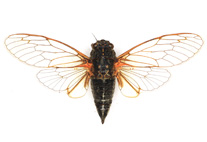Abstract
The six known “Jack-jumper species Myrmecia pilosula Fr. Smith 1858, M. croslandi Taylor 1991, M. banksi, M. haskinsorum, M. imaii and M. impaternata spp.n. are reviewed, illustrated and keyed. Myrmecia imaii is known only from southwest Western Australia, the others variously from southeastern Australia and Tasmania. These taxa were previously confused under the name M. pilosula (for which a lectotype is designated). Previous cytogenetical findings, which contributed importantly to current taxonomic understanding, are summarized for each species. Eastern and Western geographical races of the widespread M. pilosula are recognized. Myrmecia croslandi is one of only two eukaryote animals known to possess a single pair of chromosomes (2n=2 3 or 4). Myrmecia impaternata is evidentially an allodiploid (n=5 or 14, 2n=19) sperm-dependent gynogenetic hybrid between M. banksi and an element of the eastern race of M. pilosula, or their immediate ancestry. The sting-injected venom of these ants can induce sometimes fatal anaphylaxis in sensitive humans.

